The art of observation might well be Gwen Hedley’s super-power. She begins any new project with careful scrutiny of her subject.
But it’s not perfection that she seeks. Instead, Gwen is drawn to the textural details and flaws of the worn surfaces she finds so fascinating. Her work is centred around restoration using hand stitch.
Walking along the local coastline near her home, Gwen’s eye is drawn to the dilapidated objects she finds, and the beauty of natural degradation.
Textured scars and eroded objects show the passage of time, and this inspires a process of abstract mark making and stitch.
Often using a limited colour palette, her abstract marks reflect the essence of the time-worn surfaces that she studies so closely.
In 2017, affected by the war in Syria, Gwen made a bold move. She switched her focus from the small-scale changes caused by natural erosion, to the sudden and destructive devastation being suffered by war-torn communities. Her work Fractured, made for the Textile Study Group’s DIS/rupt exhibition, explores the theme of conflict.
Taking a mixed media approach, Gwen draws, prints and makes marks on paper and fabric, unifying these layers of materials with stitch. Every stitch is used to gently restore, allowing her to explore the concepts of fragmentation, distress, repair and integration.
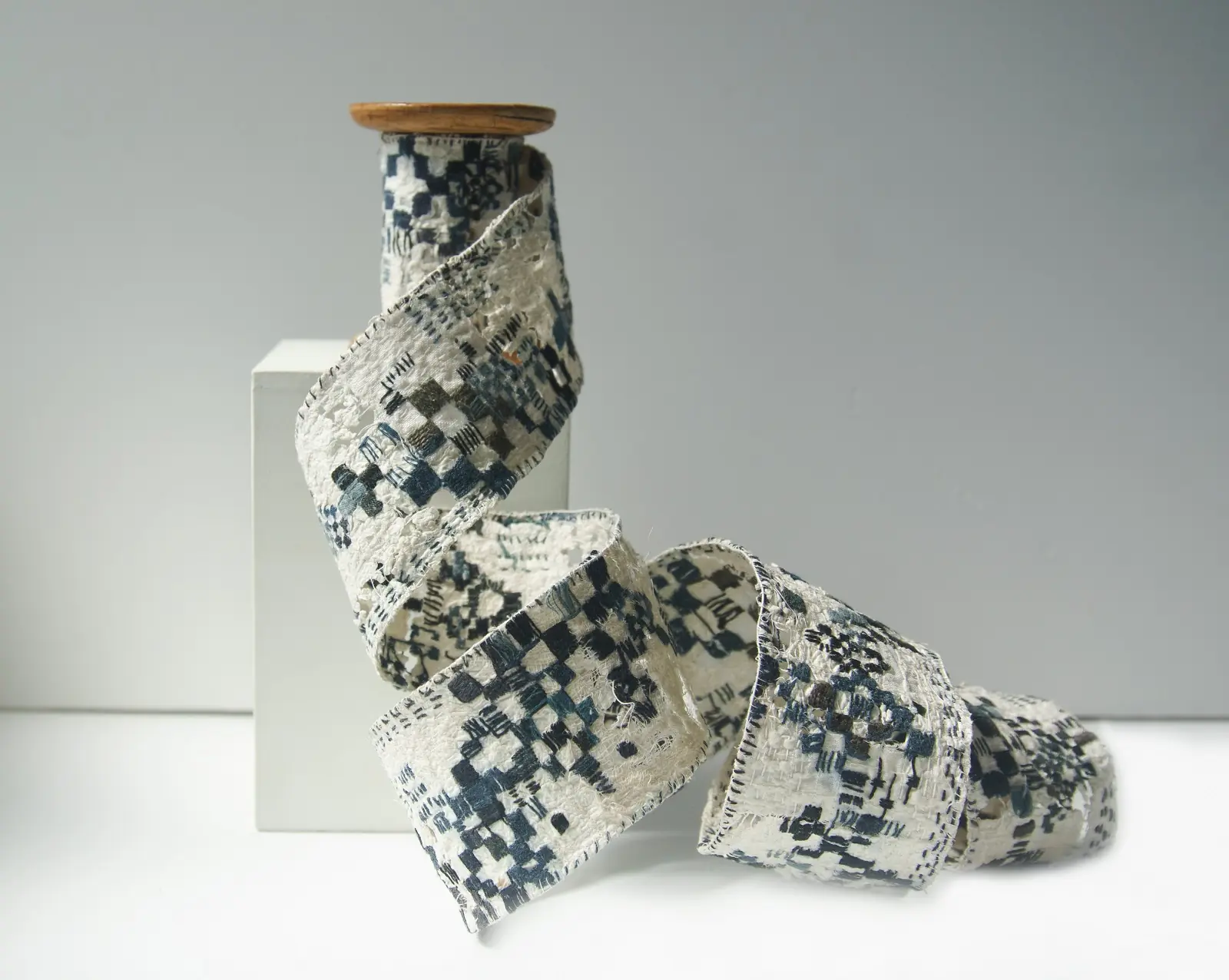
Signs of wear and tear
TextileArtist.org: Tell us about your chosen techniques and inspirations.
Gwen Headley: Living a stone’s throw from the sea, it is easy to access objects with changed surfaces and structures. I regularly walk along my local shoreline. This activity sharpens my senses, and enables me to see and think with greater clarity.
I collect ‘beach stuff’, such as pieces of wood, stone, metals, or faded and torn fabric scraps. All are transformed, showing the marks and scars from endless battering by the elements. These become my reference materials.
My sketchbook is where I begin. It’s the repository for my thoughts, observations and responses. It’s a written and visual diary. I draw an object from all angles and then focus on isolated areas, to explore and record its qualities.
Magnification reveals previously imperceptible details of mark and texture.
Observing and drawing these details opens up possibilities for abstract designs that reflect the essence of the subject.
I have started to work with intaglio printing, a printmaking technique using a press, to transfer colour and marks to cloth and paper. I continue to enjoy the freedom of piecing and patching, before unifying and enhancing with further stitch.
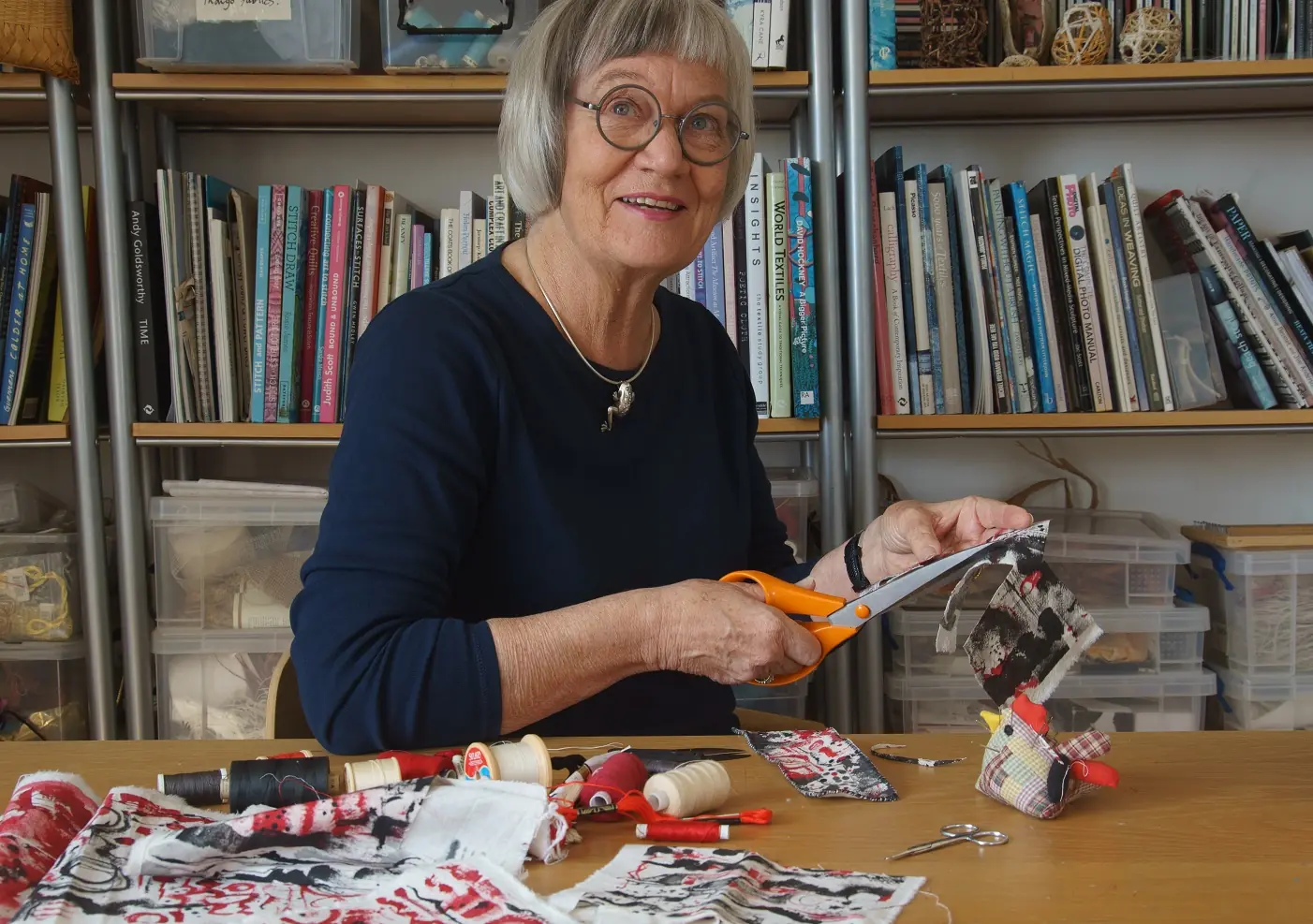
How do you create your work?
My references have always centred on surfaces and structures showing signs of erosion and disintegration. I’m interested in how objects and materials are transformed by the elements over time.
In the early days, I visited museums to find ancient worn pottery and carvings, threadbare worn textiles, or wonderful abraded gilded statues, with the aim of discovering exciting visual references.
I am naturally drawn to artefacts displaying qualities of organic change. I seek not to reproduce them, but to interpret them in a contemporary way.
Working in Sweden, I was introduced to a wonderful collection of finely worked, traditionally patterned braids. Some were almost disintegrating. The Textile Study Group later staged a joint exhibition in Sweden with Textil 13, a Swedish embroidery group. For this exhibition, I developed ideas from my drawings of these braids.
After several unsuccessful samples, I eventually found a process that gave me the results I was looking for. I pieced together cotton rag paper and fine cloth onto soluble fabric, added stitch, to suggest traditional Swedish embroidery patterns, and then soaked and gently abraded the resulting cloth.
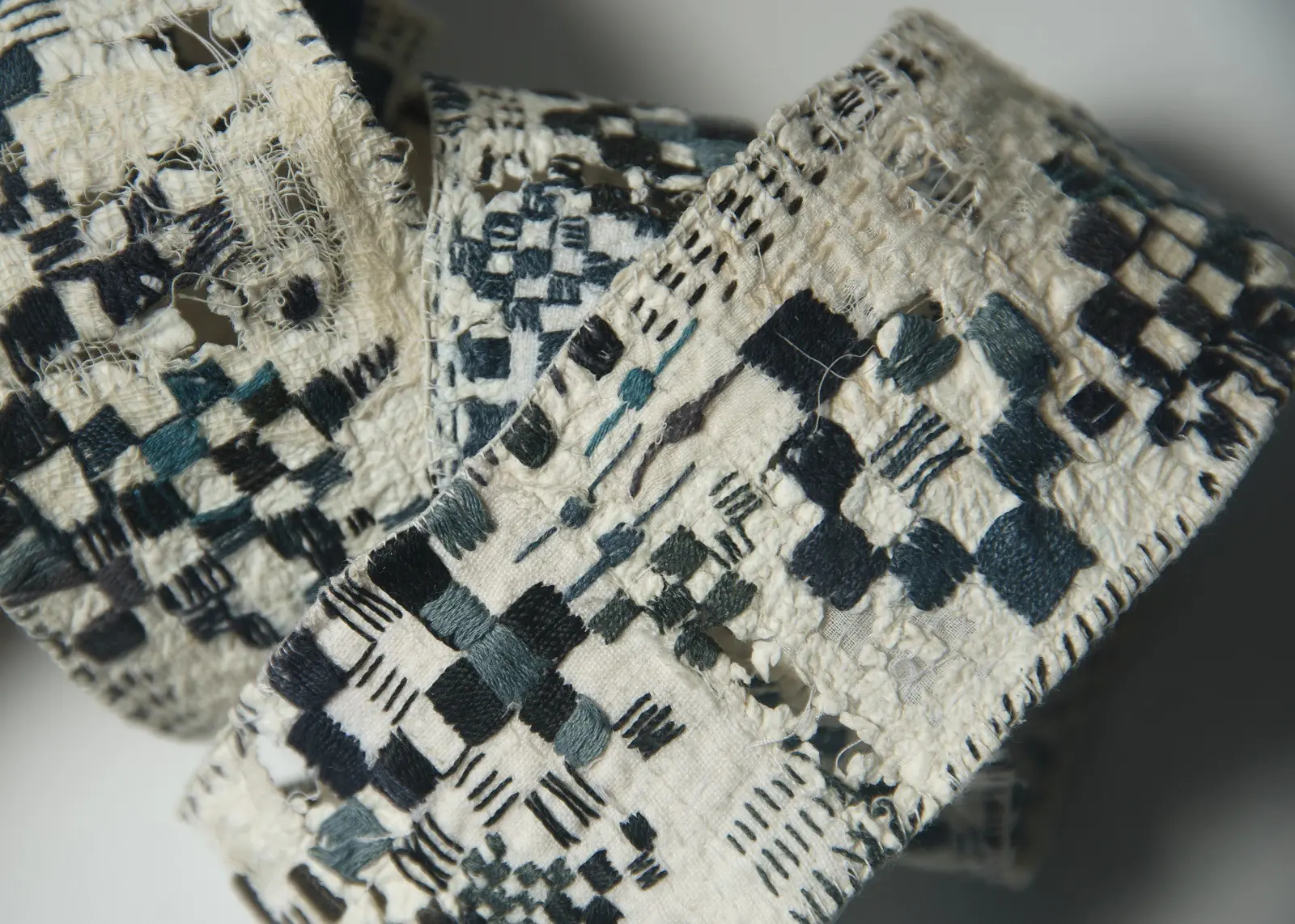
War-torn plans
Tell us about a piece of your work that is particularly important to you?
Fractured was personally an impactful work in several ways, not least in using my work to express thoughts on very dark issues.
In 2017, the Textile Study Group staged DIS/rupt, an exhibition concerned with disruption, covering a range of themes.
The project ran during the aerial bombardment of the city of Aleppo, Syria. Television coverage gave daily aerial views of the devastation it was causing, and so I chose to work with the theme of conflict.
My usual focus was on small-scale changes of surface and structure made naturally over time, but these changes were sudden and sinister, made by mankind through armed conflict, with horrific effects on families and communities on a huge geographical scale.
For this project, a change in scale and my approaches to working developed.
I researched aerial plans, noting lines, grids, symbols and divisions of space. Using simple tools and diluted paint, I drew onto several large areas of calico. I worked freely and spontaneously, making marks representing a city plan.
I ripped the drawing into pieces, then rearranged and re-joined it with simple hand stitches. It became a totally fragmented and broken city plan. I made two more pieces to accompany it.
The piece entitled Formerly is light in colour and markings, referencing an aerial plan before the war. Fractured represents the devastation from constant bombardment. Finished depicts the total loss of hope, and the final fall of Aleppo. It is composed of patches in different hues of black, with no other colour at all.
Together, they form a triptych, Narrative of Ruin, with Fractured being the central panel.
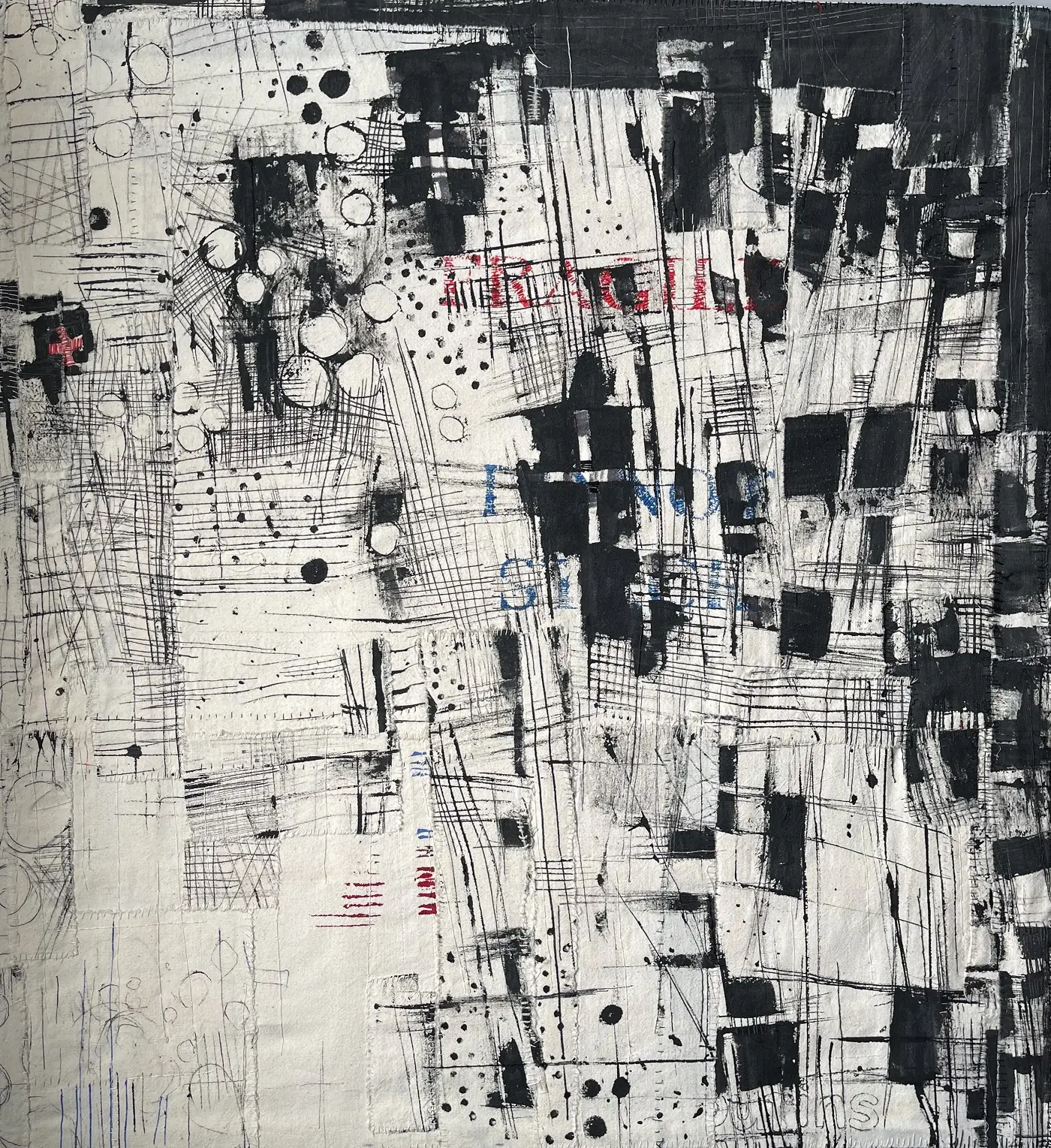
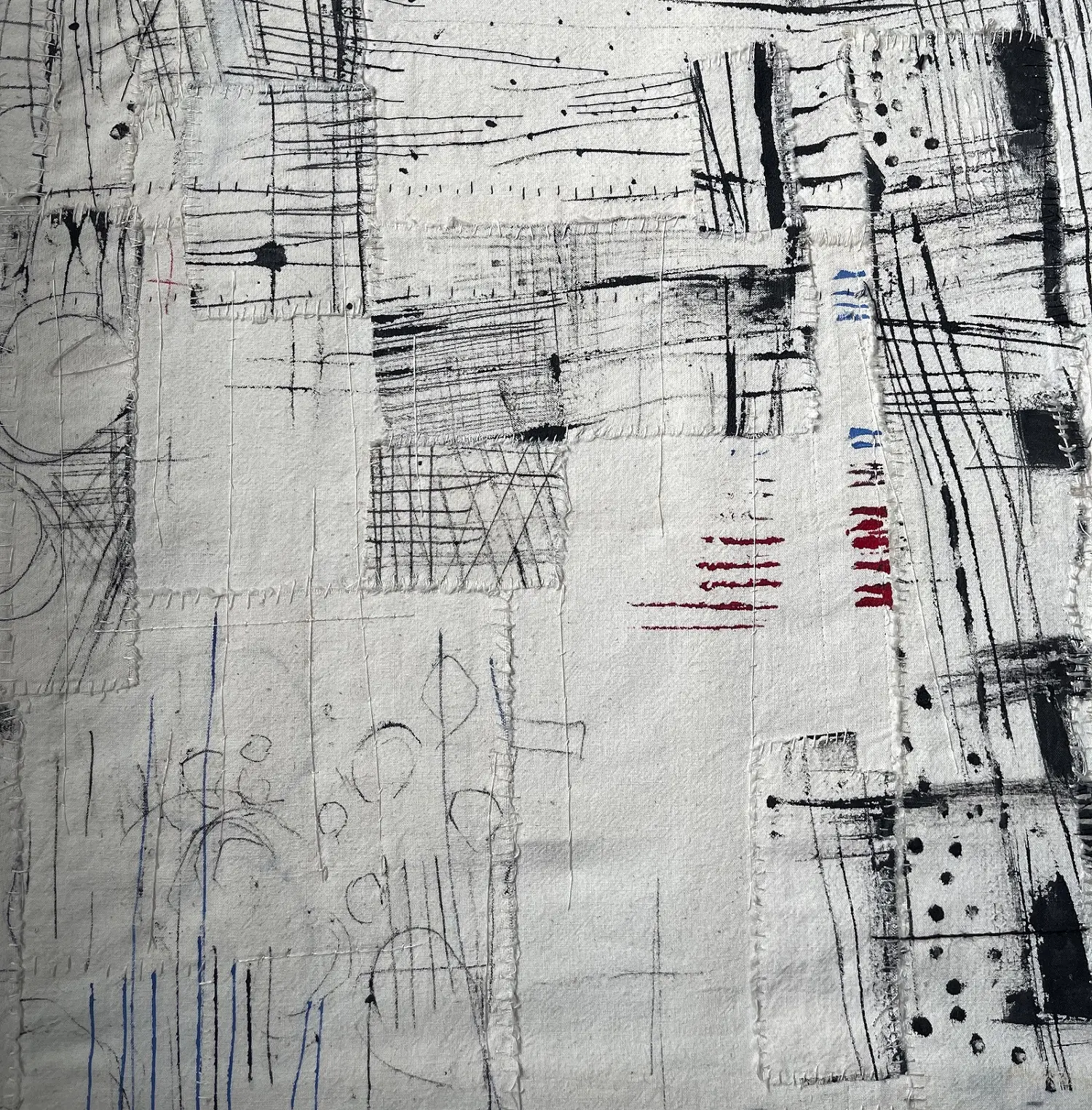
What currently inspires you?
Recently, I was out looking for material changes made to metal. But it was the disintegrating surface and form of a little leather shoe, tangled in seaweed, that really grabbed my attention.
Holding this small, single, battered shoe had a profoundly moving effect on me. Artist Paul Klee eloquently summed this up when he said, ‘One eye sees, the other feels.’
A broad definition search on ‘flotsam and jetsam’ included some very disturbing results with references to people, lending a much deeper meaning to my work.
The shoe, along with scraps of distressed fabric, became an analogy for distressed people.
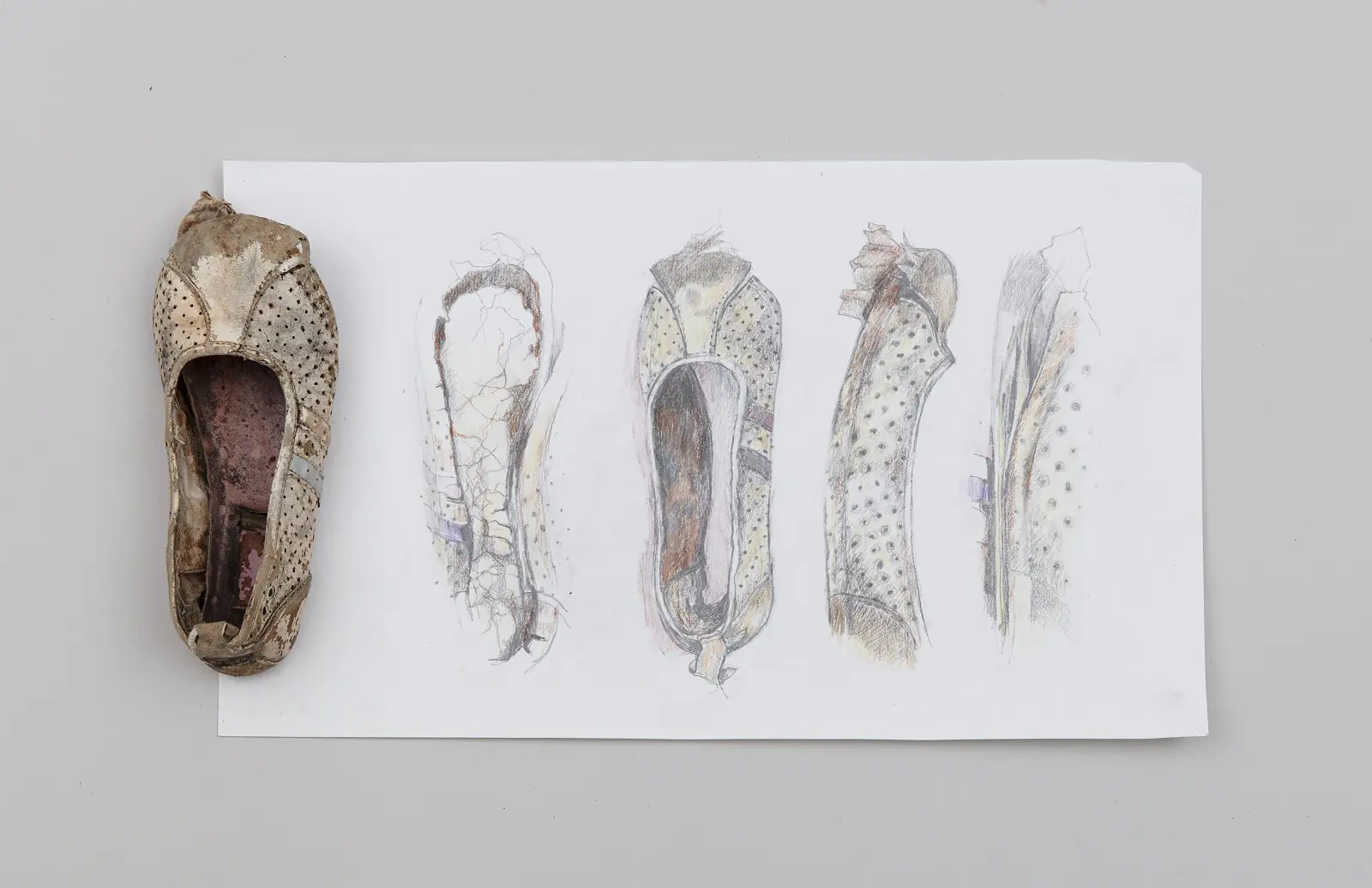
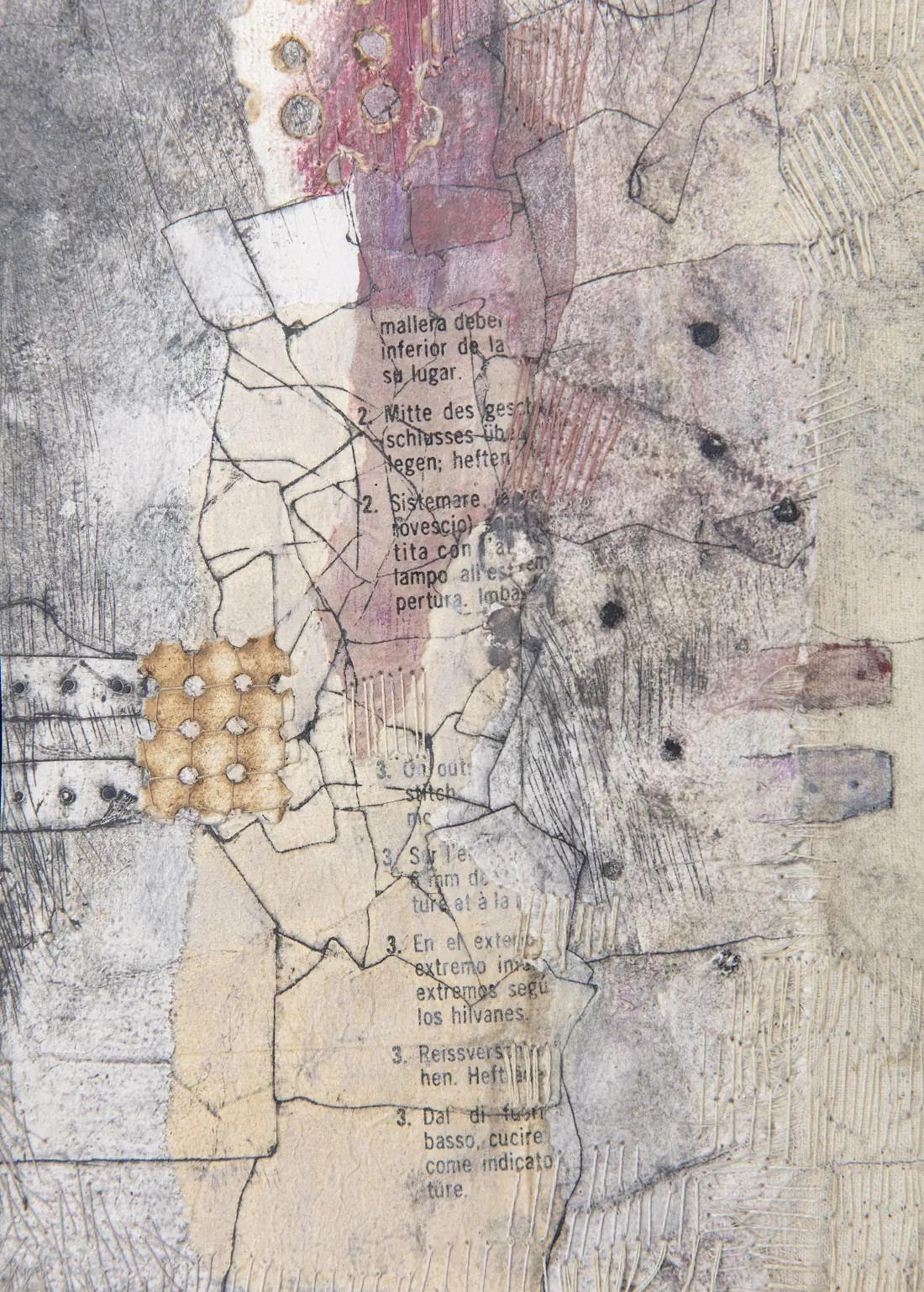
Knitting and mending
What initially attracted you to textiles as a medium?
My earliest memory of any textile activity is when I was seven years old, when I learned at school how to knit a dishcloth with thick white cotton.
I enjoyed the repetitive nature of knitting, and the satisfactory feeling of being a maker.
I can still remember how, after knitting a certain length, I was shown how to drop every fifth stitch from the needle. I would watch it run all the way down to the cast on row, making a ‘magical ladder’ appear.
My mother taught me reparative stitching skills. I suspect this was because she disliked mending of any sort, preferring to embroider household linens. In just a few years I had become skilled at darning, patching and hemming, and I happily undertook this enjoyable repair work.
I realise now, that these early domestic stitching skills laid the foundations for my enjoyment in working with textiles later in life. This is reflected in Blueprint Patch, which is simply a rectangle of stitch on cloth, a small contemporary interpretation of my memory of small repairs.
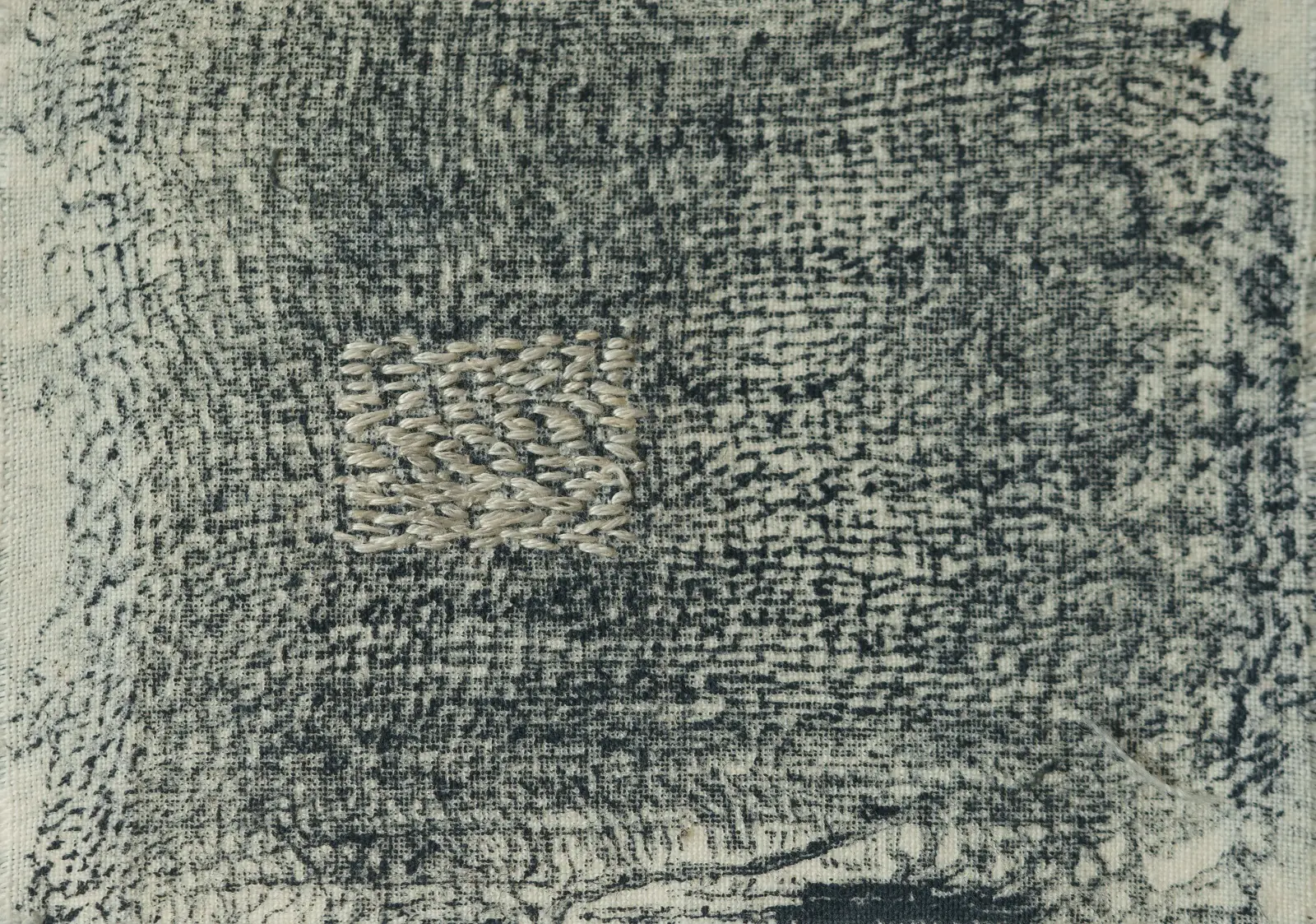
What was your route to becoming an artist and how has your life influenced your work?
In school, art was rewarding but my sewing class was a failure. It resulted in a crooked and unwearable blue poplin blouse, with non-matching and unusable buttonholes. There was no scope for choice or creativity.
I decided I did not like sewing.
When I trained as a primary school teacher, with creative arts as my specialist subject, this feeling changed. As well as drawing, painting and printing, I began to work with fibres, exploring techniques like felting, weaving, stitching and binding.
I was in my element, with a renewed love of textile processes.
Many years later, I discovered a City and Guilds embroidery course. I embarked upon six years of creative stitching, and I was pleased and proud to be a National Medallist. From then on, my teaching opportunities broadened, and the rest is history.
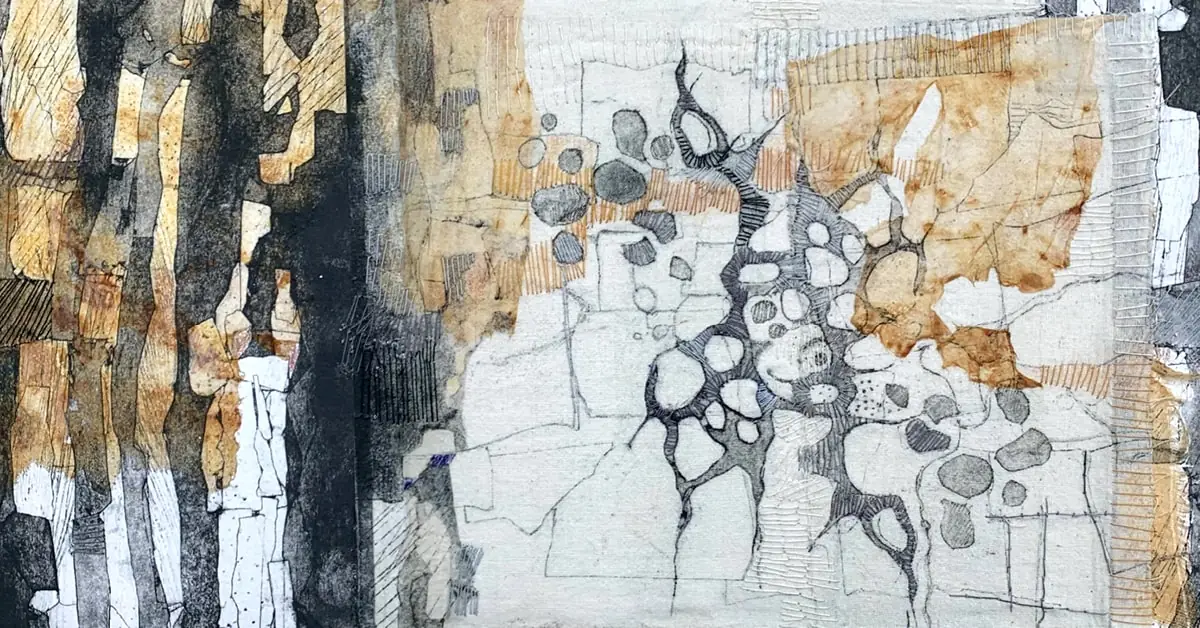
How has your work developed, and how do you see it evolving in the future?
While my working processes have gradually changed and developed, the underlying theme carries on.
The underpinnings of my work are related to an enduring concern with repair and restoration. Each work is a continuation of thoughts and ideas, but with new perspectives.
For instance, I have begun using some of the many scraps of weathered cloth collected from the shore over a long period of time. I aim to join these disparate patches, using stitch to blend and fuse them together to create cohesive units.
With care and attention, these forlorn scraps can be given new life. This leads me to further thoughts regarding some of the social issues of our times.
Integrating is a work in progress, and has received just the first layer of stitch marks. There will be many more to follow.
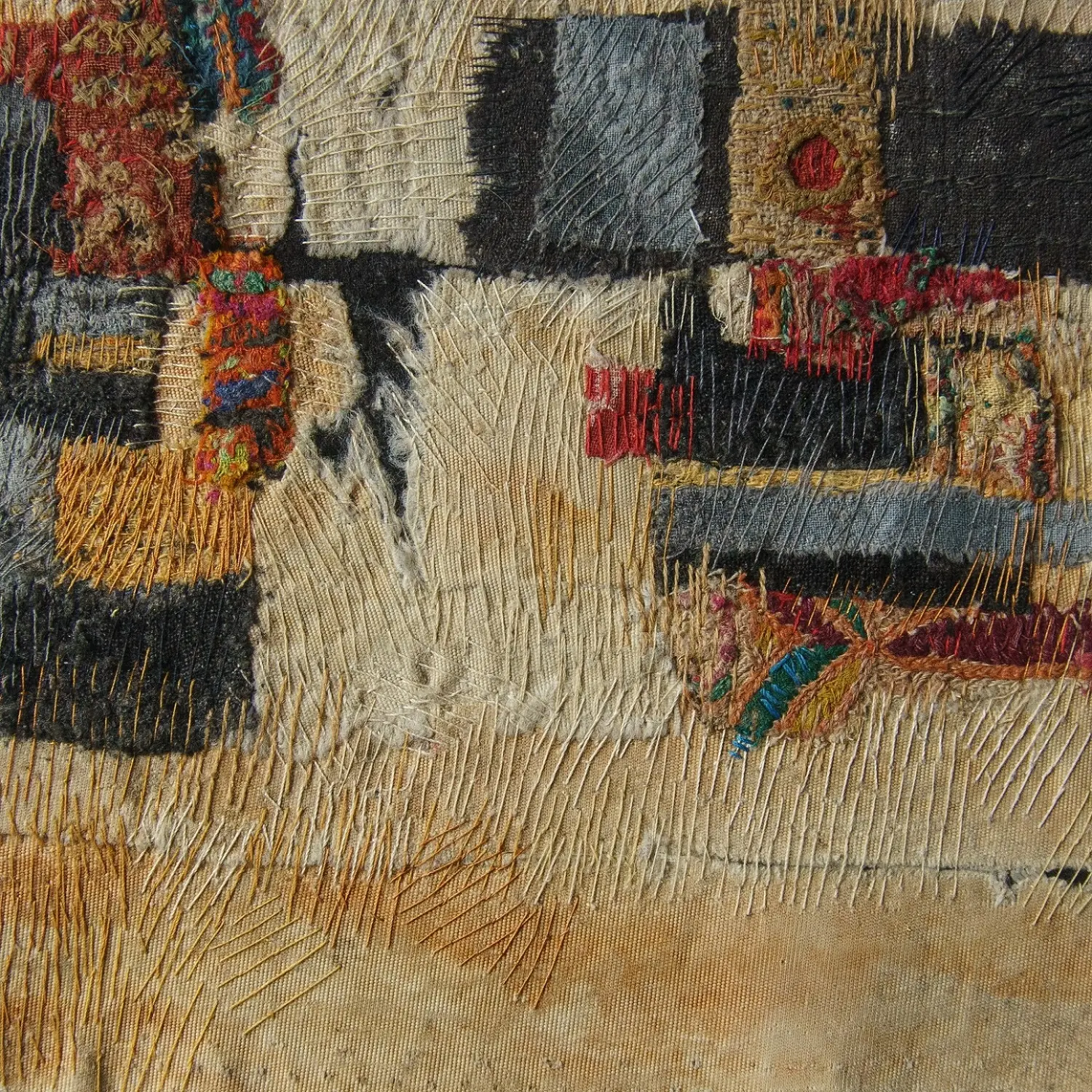
Mending and repair is a theme many textile artists relate to. Discover two more of our featured artists who work with this theme, in our articles Brooks Harris Stevens, Mindful mending and Shelley Rhodes, The art of repair.
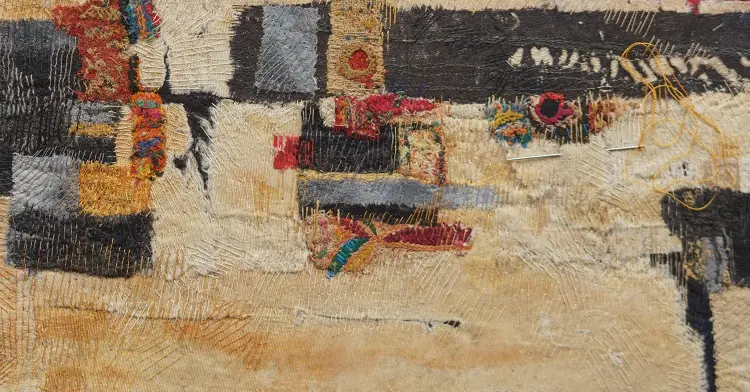

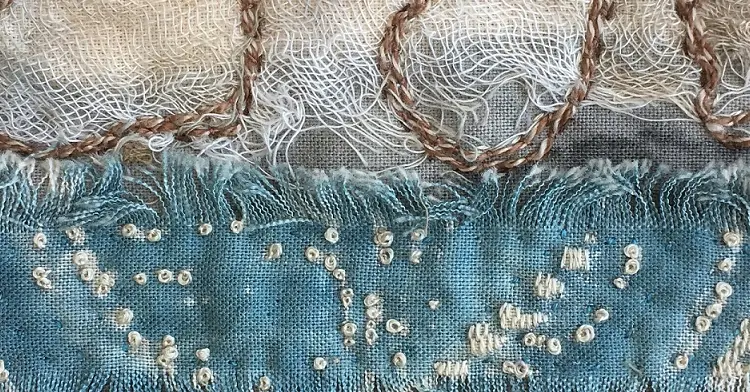
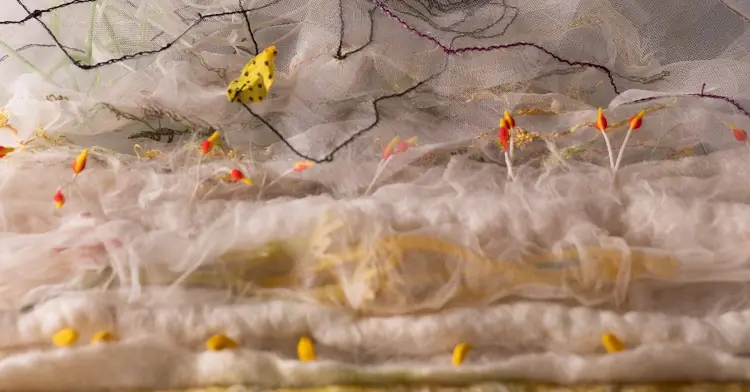
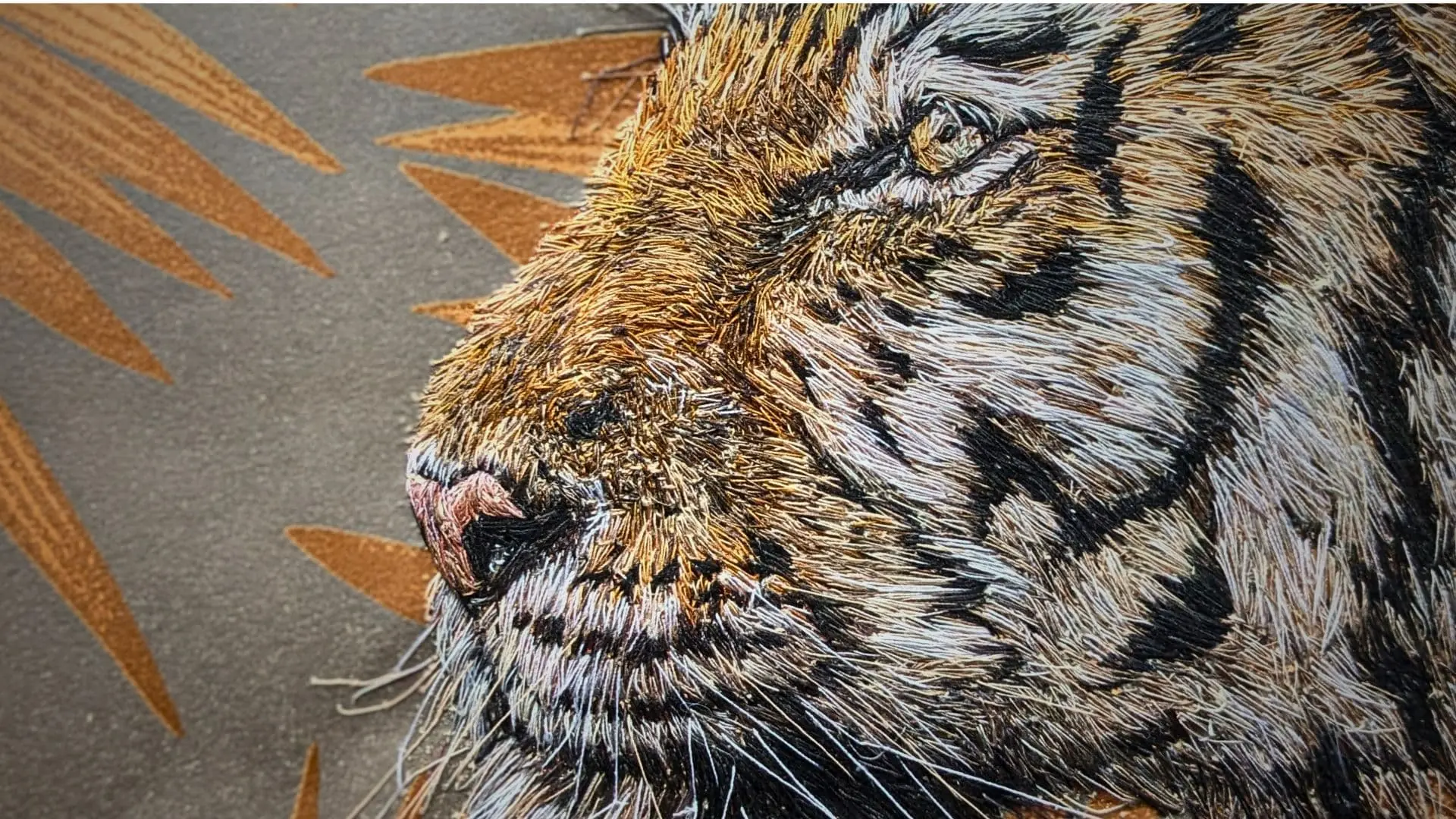
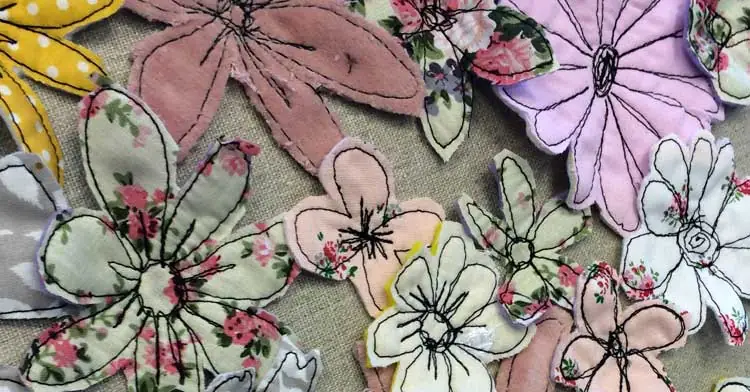
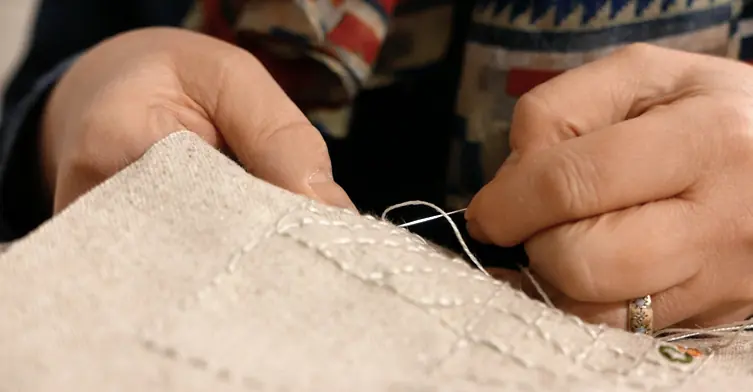
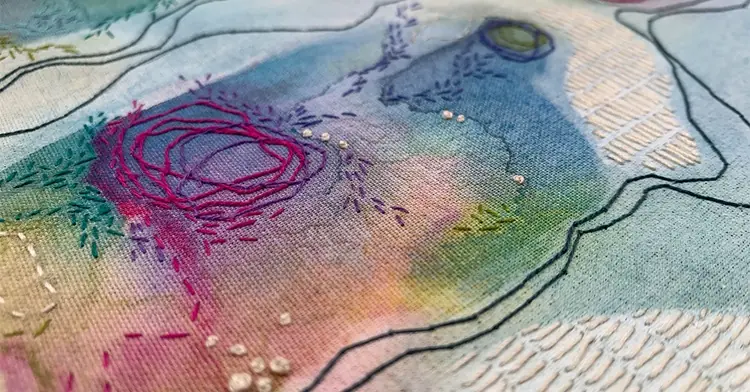
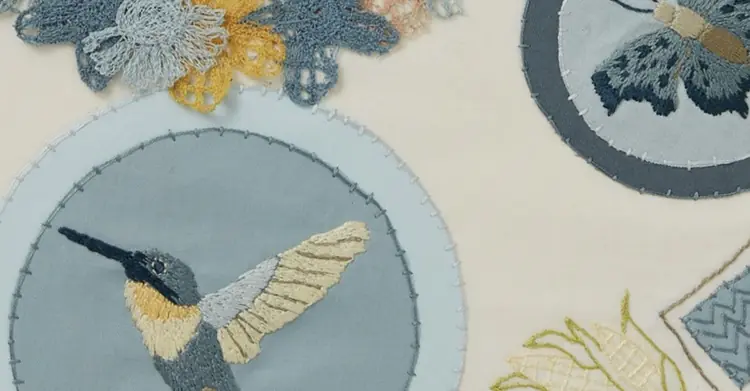
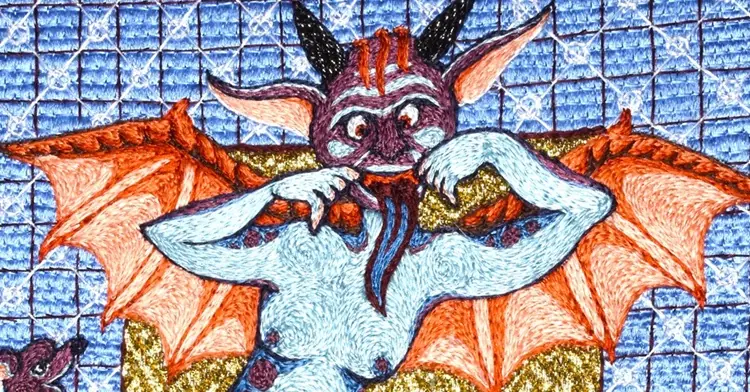
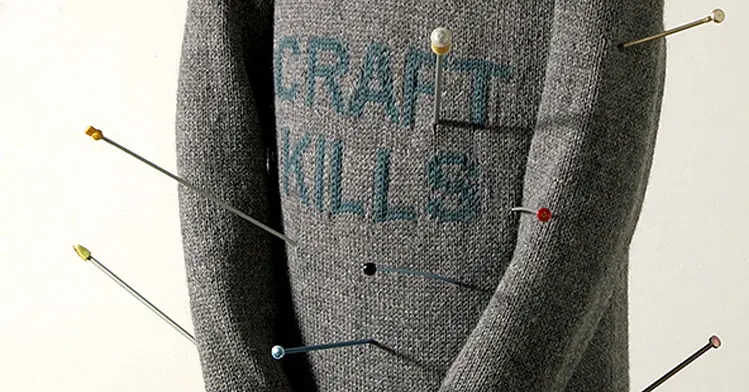
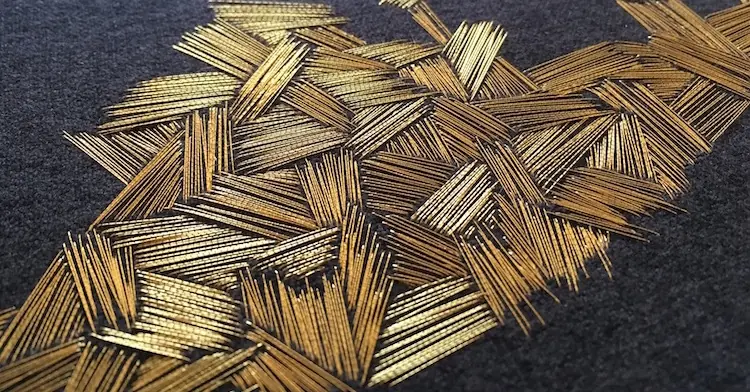
31 comments
Cat slavin
I need more of this! 💕
Lucia Lior
This is amazing to know, that we will be taught by such an inspiring artist as Gwen Hedley! In reading her story and works, I was particularly touched because I have always been attracted, since I was a little girl, by “the found”, loving to observe the effect of time and abandonment on objects of life, imagining whose hands had had it. I am so looking forward to being at Camp! Thank you, Lucia.
lia flemings
Hello,
Embroidery in a modern way is always staying an activity to explore in my textile activities. Years ago I bought your book ” Surfaces to stitch”. I read common interest points so I ‘m looking forward to create a daily ( ? ) slow motion time.
My textile speciality is arashi shibori in 3D. As a painter I try to combinate different technics in my work. Nature is a wonderfull source for inspiration.
Helen Gougeon
Hello! I signed up for the videos and was really looking forward to getting stitching this half-term. As a teacher it’s difficult to find the creative time outside of holidays. Imagine my disappointment at trying to open them and seeing I’d missed the time slot! Could I be cheeky and ask if it would be possible to organise the next workshops to link with school holidays as I’m sure I’m not alone? Thank you
Leslie
My mother is a textile artist and doll maker and has unconsciously mentored me my entire life. I love to hand stitch, cut, paste, mark, write… really looking forward to Stitch Camp!
Trish Downie
Looking forward to discovering new ideas and techniques with you Gwen.
Trish
Rachel
Gwen reads as a very interesting textile artist and I am extra pleased as the intro interview linked me with her book in my pile. Looking forward to The 5 days and thank you
Gillian Gavshon
I like Gwen’s approach to observing and seeing what can be achieved. My approach is very similar, get some fabric, get some threads, start a line here or there and keep going until there is enough. I can’t help thinking of the fabrics and items Gwen finds on the beach and with these refugees fleeing conflict – a stark reminder of what can happen. Like the previous comment I am also inspired by texture and look forward to the 5 day course which I am hoping will take me out of my comfort zone!! Thanks for sharing. (from Downunder Tasmania!!)
Margaret
I am particularly inspired by textures in nature. (On leaves,bark, stones,shells,skins etc) so am looking forward to experiencing Gwen’s ideas on texture.
I have recently downsized my 80 years worth of”stash” as failing eyesight & dexterity have slowed my creativity.
I really enjoyed re reading Gwen’s history.
Pat Porteous
At the beginning of 2021 my husband sadly died & a sculptor friend presented me with a challenge–to try &motivate me I think!! It was an old grotty much used knitted dish cloth –more holes than cloth.I just stared at it for months until I felt it depicted my life in lockdown trying to find a way out through a mass of tangled under growth so I showed some flowers finding their way and then blossoming out of the top.Very cathartic.Am now looking for more inspiration!!
Jean de la Haye
Gwen, I’ve read this interview with great interest and I’m looking forward to the stitch camp you are leading. You state “ With care and attention these forlorn scraps can be given new life.” and it’s so encouraging to see you achieving it in your work. Thank you
Linda Jackson
I am so looking forward to Stitch Camp!! I recently bought stitching supplies but never used them. I am in a stuck place and don’t know where to begin.
Pat grant
Have met gwen on a number of occasions when she ran workshops in my group in inve ness,and also at workshop in preniac in France,looking forward to her classes
Linda
A wonderfully informative interview. I’m so looking forward to learning more from Gwen with stitch camp. A huge thank you to Gwen and all those involved for making this possible.
MargaretAnne
What an interesting and thought proving interview, I too have Gwen’s books I think they came from the Bramble Patch near where I used to live, Now I too live by the sea but hardly ever find anything washed up here in the Atlantic, just a few shells which I love to draw, especially the broken ones thank you I think the next few days will be amazing x
Jan Norman
I too have a copy of Drawn Stitch by Gwen Hedley. I am a water colour artist, but last year during lockdown felt a need to try some sewing.
Sent for some books on hand sewing and have done some small pictures of shells, cliffs, stones etc as I too live near to the sea. It is very therapeutic, but I would love to try a workshop, to give me more ideas.
Melanie Hulse
A friend recommended the upcoming 5-day course with Ms Hedley. It would be so great to know which five days are involved and how many hours in a day and which hours they are and like that.
Can you help?
amberley
Hello Melanie,
Stitch Camp goes live on the 17th January. Once you have registered, you will be sent an email each day with the link to the workshop videos. Each part of the workshop is designed to give you around half an hour a day on your creative practice. You can watch the video at a time that suits you and they will be available until the 28th January.
All the best, Amberley
Margot
So excited that this esteemed fabric artist/stitcher is doing a free course starting 17th January. So looking forward to this. Thank you all so much. A wonderful, generous start to 2022. Bless you.
Annie Catford
I am astounded by this article. I have known Gwen for several years, but obviously only in a light almost casual way! I had no idea about the depth of her interests and studies. I have seen so little of her actual work! I want to remedy this immediately. I am an artist myself, working with film, photography and photo collage, and have lately become fascinated by the surface reflections and distortions of the local canal. I’ve had my abstracted photographs printed on to aluminium, itself a strange reflective surface. Gwen and I have so much in common and I had no idea. I shall be visiting!
Norma
Annie, have you tried printing your photos on fabric? I have a collextion of photos i took in the Middle East and would love to work them into a creative piece.
Mary Jane
I too have collected and saved bits and pieces from found objects to sewing scraps. I store them in color coded bags to easily find potential pieces for my work. I especially like this discussion with Gwen about her triptych of Aleppo as I am currently in an on line class where we are encouraged to develop a series. Thanks for triggering some ideas Gwen.
Olga van Dijke
How I enjoyed reading about Gwen’s work. I dont dare to buy her book, as not to be influenced. I am immensely drawn to drawing from patterns found on fabrics and intend to construct from there. I love hearing and reading about the process.
Tina
Thankyou, great read. I also spend time patching, repairing, reconstructing.
And you reminded me of a visit to the British War Museum with my sons & how I felt looking down at the photos of the aerial bombardment of Bielefeld….. of which I had to point out to my sons ( & the museum staff member) that their Grandmother & Great-grandmother had survived that night of horrendous bombing.
Kit Sutherland
Thank you for the notion of repair. I have already created watercolour paintings following the Kintsugi philosophy and now, in my very first textile art piece I am seeing how the repair notion can form a basic or included element.
Dominique Miller
Gwen Hedley has been an inspiration. Her book “Drawn to Stitch” expanded my drawing and stitching world. Allowing me to “see” the possibilities of blending the two together rather than having two separate ways to create. Fantastic interview and look at her latest work.
Thank you
Gabrielle Theano
Wonderful interview. Gwen’s work on Aleppo reflects the despair that many felt but could not express. I’m grateful for her work. Gwen’s work is always inspiring and I often go back to her book when I’m feeling a bit lost. Also it’s lovely to see her with her textiles and books – how many of your viewers spotted a book they also have. It’s nice to see that artists we admire read the same books as we do.
Therese
Wonderful to hear about your current inspirations and interest of work. I bought your book Drawn to Stitch a number of years ago….it continues to feed my own creative practice and is my go to book when I need inspiration myself…thank you…
Glen Gerrard
Inspirational interview. Just started 2 weeks holiday on Yorkshire moors and as usual ~Gwen has kick started my imagination. Thank you
Gwen
Enjoy the Yorkshire moors! Gather some good marks – rubbing? Drawings? Would love to see what marks you have time to make!